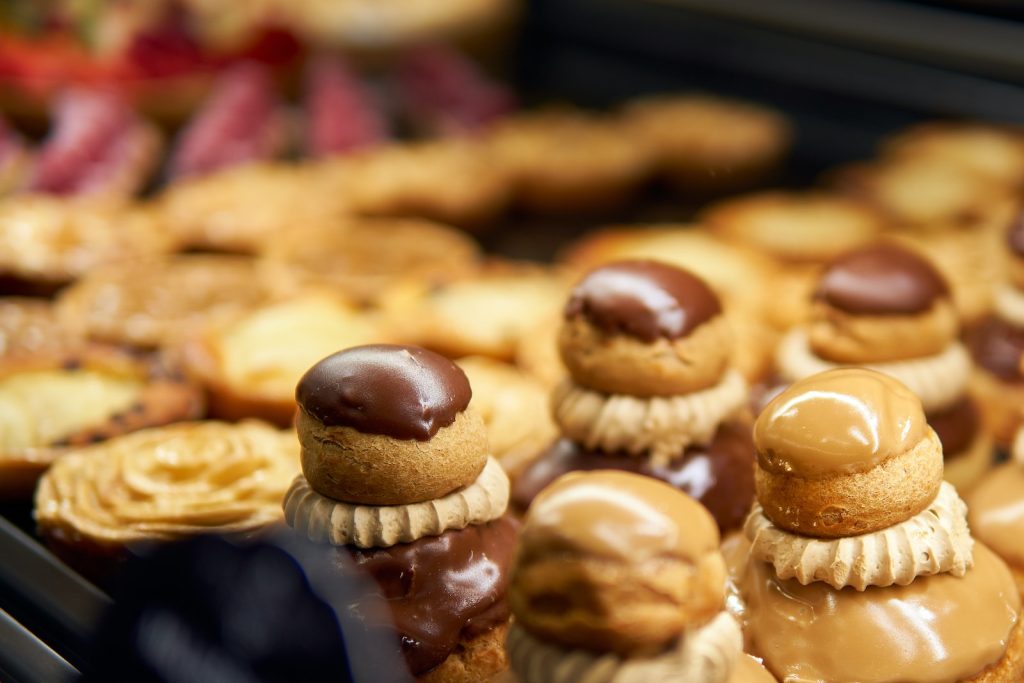Belgian and French chocolate are renowned worldwide for their exquisite taste and craftsmanship. These two countries have a long-standing tradition of producing high-quality chocolate that has captivated chocolate lovers around the globe. In this article, we will delve into the differences and similarities between Belgian and French chocolate, exploring their history, production methods, flavors, notable brands, and more.
Belgian chocolate, with its rich and creamy taste, has a long tradition dating back to the 19th century. It has become synonymous with excellence and has established its place as one of the finest chocolates in the world. Notable Belgian brands like Neuhaus are renowned for their high-quality chocolates, capturing the hearts of chocolate connoisseurs.Belgians are credited with inventing pralines and filled chocolates, which have become iconic delicacies in the world of chocolate.
On the other hand, French chocolate is celebrated as an art form and is often associated with luxury. French premium chocolates, particularly dark chocolate with nuts, have gained a growing market demand. French chocolate bonbons are dipped, resulting in a thinner shell that melts easily on the tongue, allowing the flavors to be savored.French chocolate has a noticeable bolder flavor compared to other types of chocolate. It has a long history and was initially a luxury for the upper class. French chocolatiers have perfected the art of using French chocolate to create various chocolate treats that are both visually stunning and delicious.
History and Reputation
Belgian chocolate has a rich history that dates back to the 19th century. During this time, chocolate production in Belgium flourished, and the country quickly became known for its exceptional quality and craftsmanship. The invention of pralines and filled chocolates by Belgian chocolatiers revolutionized the chocolate industry. These delectable creations introduced a new level of sophistication and artistry to chocolate making. Today, Belgian chocolate is celebrated worldwide for its diverse flavors, velvety texture, and meticulous attention to detail.
One notable Belgian brand that has contributed to the reputation of Belgian chocolate is Neuhaus. Established in 1857, Neuhaus is considered a pioneer in the world of pralines and is renowned for its high-quality chocolates. Their master chocolatiers carefully select the finest ingredients, ensuring that each chocolate creation is a true masterpiece. With its long-standing history and commitment to excellence, Neuhaus continues to be a symbol of Belgian chocolate craftsmanship.
The reputation of Belgian chocolate has also been shaped by the country’s tradition of artisanal craftsmanship. Belgian chocolatiers have a long-standing tradition of excellence, passing down their skills from generation to generation. Each chocolate creation is made with meticulous care, from tempering the chocolate to creating intricate designs and fillings. The dedication and passion of these chocolatiers have earned Belgian chocolate its status as one of the world’s finest chocolates.
French chocolate, on the other hand, has a rich and storied history that dates back centuries. The French have a deep appreciation for the art of chocolate making and consider it an essential part of their culinary heritage. French chocolate is often associated with luxury and elegance, making it a sought-after indulgence worldwide.
Notable French chocolate brands include Valrhona, Michel Cluizel, and La Maison du Chocolat. These brands are known for their commitment to using only the finest ingredients and their dedication to maintaining the highest standards of quality. Valrhona, for example, has been producing high-quality chocolate since 1922 and is renowned for its unique flavor profiles and exceptional craftsmanship. French chocolatiers are known for their ability to transform French chocolate into a wide array of delectable treats, from delicate bonbons to intricate sculptures.
French chocolate has a distinct reputation for its bolder flavor compared to other types of chocolate. This is due to the use of high-quality cocoa beans and the precise process of chocolate making. French chocolates are often consumed in bite-sized pieces, allowing the flavors to be savored slowly and appreciated fully. The combination of rich flavor and meticulous craftsmanship has established French chocolate as an emblem of luxury and sophistication.
Chocolate Production Methods



The production methods used in Belgium and France play a significant role in shaping the unique characteristics of their chocolates. Belgian chocolate production methods emphasize quality and diversity in flavor and texture. Belgian chocolatiers have perfected the art of creating chocolates with a smooth and velvety texture. To achieve this, they often use emulsifiers, which help create a creamy consistency that is similar to Swiss chocolate.
In contrast, French chocolate production involves an exacting process that focuses on using high cocoa content and adding cream and extracts for unique flavors. French chocolates are made with only the best ingredients, reflecting their commitment to excellence. The meticulous process of creating French chocolate ensures that each piece is a true work of art. French chocolates are considered a type of high-grade chocolate called couverture, known for their bolder flavor. The combination of high cocoa content and the precise blending of ingredients results in a chocolate that is rich, complex, and deeply satisfying.
Belgian chocolatiers have a long-standing tradition of excellence in craftsmanship. They take pride in their attention to detail and their ability to create chocolates that are visually stunning as well as delicious. Belgian chocolate production methods emphasize the importance of using high-quality ingredients and ensuring that each chocolate creation is a true reflection of the chocolatier’s skill and artistry.
French chocolatiers, too, are known for their unwavering commitment to excellence in chocolate making. The French approach to chocolate production involves a meticulous process that focuses on achieving the perfect balance of flavors and textures. French chocolates are made with only the finest ingredients, and each step of the production process is carefully executed to ensure that the end result is a chocolate of unparalleled quality.
Varieties of Chocolate Flavors and Styles
Belgian chocolate offers a diverse range of flavors and textures, attracting tourists from all over the world. Known for its rich, creamy taste and less sweetness, Belgian chocolates delight the taste buds with a wide variety of fillings, such as praline, caramel, and ganache. These fillings add a layer of complexity and depth to the chocolates, enhancing the overall taste experience. Belgian chocolate is also known for its ability to strike a balance between sweetness and richness, making it a favorite among chocolate enthusiasts.
French chocolates, on the other hand, have a noticeably bolder flavor compared to other types of chocolate. The distinct flavor profile of French chocolate is a result of the high-quality cocoa beans used and the precise blending of ingredients. French chocolate is lower in fat, making it a perfect choice for lovers of dark chocolate. The bolder flavor of French chocolate is often attributed to the careful selection and roasting of the cocoa beans, which brings out the rich and complex flavors inherent in the beans.
French chocolates encompass a wide range of styles, from traditional to innovative flavor combinations. The French are known for their creativity and willingness to experiment with different ingredients and flavors. This has led to the development of unique chocolate creations that push the boundaries of traditional chocolate making. From the classic combination of chocolate and hazelnuts to more adventurous pairings like chocolate and lavender, French chocolates offer a wide variety of flavor experiences.
Both Belgian and French chocolates have their own distinct styles and flavors, reflecting the unique culinary traditions of their respective countries. Belgian chocolate is known for its creamy texture and balanced sweetness.
Notable Chocolate Brands and Their Significance
Belgian Chocolate Brands:
- Neuhaus:
- Historical Significance: Founded in 1857, Neuhaus has played a pivotal role in shaping the Belgian chocolate industry over the decades.
- Product Variety: Known for a wide array of chocolates including pralines, truffles, and filled chocolates which cater to a broad spectrum of chocolate enthusiasts.
- Quality and Craftsmanship: The brand’s adherence to utilizing only the finest ingredients and its dedication to craftsmanship have garnered it a loyal following globally.
- Godiva:
- Luxurious Presentation: Godiva is synonymous with premium Belgian chocolate, partly due to its elegant packaging that enhances the chocolate experience.
- Premium Quality: Offers a wide range of high-quality chocolate creations, cementing its position in the premium chocolate segment.
- Leonidas:
- Iconic Pralines: Known for its signature pralines that have become a favorite among many.
- Affordability and Quality: Strikes a balance between quality and affordability, making high-quality chocolate more accessible.
- Côte d’Or:
- Creamy Chocolate Bars: Renowned for its rich and creamy chocolate bars that have become a household name not just in Belgium but globally.
- Long-standing Reputation: Maintains a solid reputation for quality over the years.
French Chocolate Brands
- Valrhona:
- Pioneering Quality: Since its establishment in 1922, Valrhona has consistently pushed the boundaries of flavor and quality in French chocolate production.
- Wide Product Range: Offers a variety from single-origin bars to exquisite bonbons, showcasing the brand’s expertise and passion for chocolate.
- Michel Cluizel:
- Exceptional Craftsmanship: Known for its exceptional quality and traditional chocolate-making techniques that yield smooth, velvety chocolates with rich, complex flavors.
- Ethical Practices: The brand’s commitment to sustainable and ethical practices enhances its appeal among conscious consumers.
- La Maison du Chocolat:
- Elegance and Sophistication: Synonymous with elegance, known for its exquisite chocolate creations and impeccable presentation.
- Master Chocolatiers: The expertise of the brand’s master chocolatiers in selecting fine ingredients and employing traditional techniques result in visually stunning and delicious chocolates.
Industry Contributions
- Tradition and Expertise: Belgian and French chocolate brands embody the rich tradition and expertise of their respective countries in chocolate-making. Their significant contributions to the chocolate world reflect the unique flavors and craftsmanship inherent in Belgian and French chocolates, allowing consumers to experience a rich heritage with each bite.
Quality and Taste Comparisons



Swiss chocolate is known for its creamy texture and use of the conching technique. The conching process, which involves grinding the chocolate for an extended period, helps create a smooth and velvety texture that is characteristic of Swiss chocolate. Swiss chocolates are made with high-quality ingredients and have a long history dating back to the 17th century. The Swiss have perfected the art of chocolate making, and their chocolates are renowned for their exceptional quality and craftsmanship.
When comparing Belgian chocolate to French chocolate, there are notable differences in terms of taste and texture. Belgian chocolate is darker and often uses emulsifiers to achieve a similar texture to Swiss chocolate. Emulsifiers help create a creamy consistency that is characteristic of Belgian chocolate. The use of emulsifiers has become a common practice in Belgian chocolate production, allowing chocolatiers to achieve a smooth and velvety texture that melts in your mouth.
French chocolate, on the other hand, has a bolder flavor compared to other types of chocolate. The bolder flavor is a result of the high-quality cocoa beans used and the precise blending of ingredients. French chocolates have a distinct richness and complexity that sets them apart. They are often consumed in bite-sized pieces, allowing the flavors to be savored slowly and appreciated fully.
French chocolates have a long history and were initially a luxury for the upper class. The meticulous process of creating French chocolate reflects the country’s commitment to excellence and its dedication to preserving the art of chocolate making. Only the best ingredients are used to create French chocolate, ensuring that each piece is a true reflection of the chocolatier’s skill and artistry. French chocolates may be more expensive due to the time and commitment to excellence in their production. The combination of rich flavor, meticulous craftsmanship, and premium pricing has established French chocolate as an emblem of luxury and sophistication.
Differences in Bonbons
Belgian chocolate bonbons are known for their variety of fillings, including praline, ganache, and fruit creams. The wide array of fillings adds a layer of complexity and depth to the bonbons, creating a delightful taste experience. Belgian chocolate bonbons often have a thicker shell, which provides a satisfying crunch before melting in your mouth. The bonbons are meticulously crafted, with a range of decorative designs that make them visually appealing as well.
French chocolate bonbons, on the other hand, are known for their simplicity and elegance. They are dipped rather than filled, resulting in a thinner shell that melts easily on the tongue. French chocolatiers believe in allowing the quality and flavor of the chocolate itself to take center stage. The focus is on creating a thin, delicate shell that enhances the chocolate’s flavor without overpowering it. French chocolate bonbons are often presented in an elegant and sophisticated manner, making them a perfect choice for special occasions or as a luxurious indulgence.
While both Belgian and French chocolate bonbons offer a delightful taste experience, they differ in terms of filling and shell thickness. Belgian chocolate bonbons entice with their variety of fillings and thicker shells, while French chocolate bonbons captivate with their simplicity and thin, delicate shells.
Factors Affecting Price
Several factors contribute to the price of Belgian and French chocolates. In the case of Belgian chocolate, the commitment to excellence and the use of high-quality ingredients contribute to its price. Belgian chocolatiers take pride in their artisanal craftsmanship and attention to detail, ensuring that each piece of chocolate is a true work of art. The meticulous process of creating Belgian chocolate, from sourcing the finest cocoa beans to handcrafting each chocolate creation, increases its value.
The reputation and demand for Belgian chocolate also influence its price. Belgian chocolate has established itself as a premium product, renowned for its quality and craftsmanship. The popularity of Belgian chocolate, both locally and internationally, has contributed to its growing market demand, which in turn affects its price.
Similarly, French chocolates may be more expensive due to the time and commitment to excellence in their production. French chocolatiers take great care in selecting the finest ingredients and using traditional techniques to create their chocolates. The meticulous process, coupled with the use of high-quality ingredients, adds to the cost of French chocolate. The premium pricing of French chocolate is also influenced by its association with luxury and sophistication. French chocolates are often seen as a symbol of indulgence, and their pricing reflects this perception.
The price of both Belgian and French chocolates is a reflection of the craftsmanship, quality of ingredients, and the reputation associated with each country’s chocolate industry. While they may be priced at a premium, the experience of savoring a piece of Belgian or French chocolate is truly unparalleled.
Growing Market Demand
Belgian chocolate’s diverse flavors and textures attract tourists from all over the world. The reputation of Belgian chocolate as a premium product has contributed to its growing market demand. Visitors to Belgium often seek out authentic Belgian chocolate, as it is seen as a must-try delicacy. Belgian chocolate has become a symbol of the country’s culinary excellence and craftsmanship, leading to increased popularity and a growing market demand.
French premium chocolates, particularly dark chocolate with nuts, have gained a growing market demand. The bold and complex flavors of French chocolate, coupled with the country’s reputation for culinary sophistication, have contributed to its increasing popularity. The market demand for French chocolate reflects a growing appreciation for its unique qualities and flavors. As more consumers seek out high-quality chocolates that offer a sensory experience, the demand for French chocolate continues to rise.
The growing market demand for both Belgian and French chocolates is a testament to the artistry and craftsmanship that goes into their production. Whether it’s the rich and creamy taste of Belgian chocolate or the bold and complex flavors of French chocolate, consumers around the world are increasingly drawn to these exceptional treats.
Chocolate Consumption Trends



The consumption trends of Belgian and French chocolate reflect the preferences of consumers for specific flavors and styles. Dark chocolate, with its rich and intense flavor, has gained popularity among health-conscious consumers in both Belgium and France. The perceived health benefits of dark chocolate, coupled with its complex flavor profile, have made it a sought-after choice among chocolate enthusiasts.
Innovation plays a significant role in the chocolate consumption trends in both countries. Belgian chocolate, with its diverse flavors and textures, continues to attract tourists and locals alike. Belgian chocolatiers are known for their creativity and willingness to experiment with different ingredients and flavors. This has led to the development of unique chocolate creations that cater to evolving consumer tastes. From the classic combination of chocolate and hazelnuts to more adventurous pairings like chocolate and chili, Belgian chocolate offers a wide variety of flavor experiences.
Similarly, French chocolate encompasses a wide range of styles, from traditional to innovative flavor combinations. French chocolatiers are constantly pushing the boundaries of chocolate making, creating unique and exciting flavor combinations that captivate the palate. From lavender-infused chocolates to exotic fruit-filled bonbons, French chocolate offers a sensory experience that is both indulgent and adventurous.
The evolving taste preferences of consumers, coupled with the creativity of Belgian and French chocolatiers, have contributed to the dynamic chocolate consumption trends in both countries. Whether it’s the classic flavors of Belgian chocolate or the innovative creations of French chocolatiers, there is a chocolate for every taste and occasion.
Sustainability Practices
Both Belgian and French chocolate producers have recognized the importance of adopting sustainable practices in their industry. They understand the impact that cocoa production can have on the environment and the communities involved. As a result, they have taken steps to ensure that their chocolate is produced in an ethical and sustainable manner.
Ethical sourcing of cocoa beans is a key focus for both Belgian and French chocolate producers. They work closely with cocoa farmers to ensure fair trade practices and promote sustainable farming methods. This includes paying farmers a fair price for their cocoa beans and providing them with the necessary resources to improve their farming practices. By supporting local communities and promoting sustainable farming, Belgian and French chocolate producers are contributing to the long-term sustainability of the chocolate industry.
Environmental sustainability is another important consideration for Belgian and French chocolate producers. They are committed to minimizing the environmental impact of chocolate production. This includes reducing water usage, implementing energy-efficient practices, and adopting packaging solutions that are environmentally friendly. By prioritizing sustainability, Belgian and French chocolate producers are working towards a more responsible and environmentally conscious chocolate industry.
The adoption of sustainability practices by Belgian and French chocolate producers reflects their commitment to creating a more sustainable and ethical chocolate industry. They are taking steps to ensure that their chocolate is not only delicious but also produced in a way that respects the environment and the communities involved in its production.
Cultural Significance
Belgian and French chocolate hold cultural significance as integral parts of the culinary traditions in Belgium and France. Chocolate is deeply embedded in the cultural fabric of both countries and is associated with celebrations, festivals, and traditional recipes. It is often seen as a symbol of indulgence and a reflection of the rich culinary heritage of Belgium and France.
In Belgium, chocolate is an integral part of the country’s identity and is celebrated as a national treasure. Belgian chocolate is often associated with craftsmanship and quality, reflecting the country’s dedication to excellence. Chocolate is incorporated into traditional recipes, such as chocolate mousse and Belgian waffles, which have become iconic dishes in Belgian cuisine.
Similarly, in France, chocolate is considered an art form and is deeply intertwined with the country’s culinary heritage. French chocolate is often associated with elegance and sophistication, reflecting the French passion for gastronomy. Chocolate is used in traditional French pastries, such as chocolate croissants and éclairs, which are celebrated for their exquisite taste and delicate craftsmanship.
Both Belgian and French chocolate have become an integral part of the cultural identity and values of their respective countries. They are celebrated as culinary treasures that showcase the craftsmanship and creativity of Belgian and French chocolatiers.
Conclusion
In conclusion, Belgian and French chocolate possess their own unique characteristics, flavors, and production methods. Belgian chocolate is known for its diverse flavors and textures, while French chocolate boasts a bolder flavor profile. Both countries have a rich history and reputation for producing high-quality chocolates, with notable brands that have become synonymous with excellence. The growing market demand for both Belgian and French chocolate reflects the appreciation for their unique qualities and flavors. Whether you prefer the creamy richness of Belgian chocolate or the bold flavors of French chocolate, both offer a sensory experience that is sure to satisfy any chocolate lover. The artistry and craftsmanship of Belgian and French chocolatiers have solidified their place as some of the finest chocolates in the world. So, indulge in a piece of Belgian or French chocolate and experience the magic that lies within each bite.

